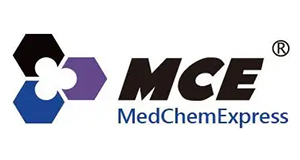Maltodextrin, dextrose equivalent 5.0-8.0, CAS 9050-36-6
Maltodextrin, dextrose equivalent 5.0-8.0, CAS 9050-36-6
Artikelnummer
MEXHY-W250795B-0
Verpackungseinheit
Get quote
Hersteller
MedChemExpress
Verfügbarkeit:
wird geladen...
Preis wird geladen...
Product Description: Maltodextrin, dextrose equivalent 5.0-8.0 can be used as an excipient. Pharmaceutical excipients, or pharmaceutical auxiliaries, refer to other chemical substances used in the pharmaceutical process other than pharmaceutical ingredients. Pharmaceutical excipients generally refer to inactive ingredients in pharmaceutical preparations, which can improve the stability, solubility and processability of pharmaceutical preparations. Pharmaceutical excipients also affect the absorption, distribution, metabolism, and elimination (ADME) processes of co-administered drugs. Dextrose Equivalent (DE) expresses the number of reducing ends aldehyde groups relative to pure glucose at the same concentration, so that high DE indicates high hydrolytic conversion and lower average molecular mass[1][2].
Applications: Metabolism-sugar/lipid metabolism
Formula: (C6H10O5)n·xH2O
References: [1]Elder DP, et al. Pharmaceutical excipients - quality, regulatory and biopharmaceutical considerations. Eur J Pharm Sci. 2016 May 25;87:88-99./[2]Takeiti, C. Y., et al. Morphological and Physicochemical Characterization of Commercial Maltodextrins with Different Degrees of Dextrose-Equivalent. International Journal of Food Properties, 13(2), 411–425.
CAS Number: 9050-36-6
Molecular Weight: N/A
Research Area: Others
Target: Endogenous Metabolite
Applications: Metabolism-sugar/lipid metabolism
Formula: (C6H10O5)n·xH2O
References: [1]Elder DP, et al. Pharmaceutical excipients - quality, regulatory and biopharmaceutical considerations. Eur J Pharm Sci. 2016 May 25;87:88-99./[2]Takeiti, C. Y., et al. Morphological and Physicochemical Characterization of Commercial Maltodextrins with Different Degrees of Dextrose-Equivalent. International Journal of Food Properties, 13(2), 411–425.
CAS Number: 9050-36-6
Molecular Weight: N/A
Research Area: Others
Target: Endogenous Metabolite
| Artikelnummer | MEXHY-W250795B-0 |
|---|---|
| Hersteller | MedChemExpress |
| Hersteller Artikelnummer | HY-W250795B-0 |
| Verpackungseinheit | Get quote |
| Mengeneinheit | STK |
| Produktinformation (PDF) | Download |
| MSDS (PDF) |
|

 English
English









